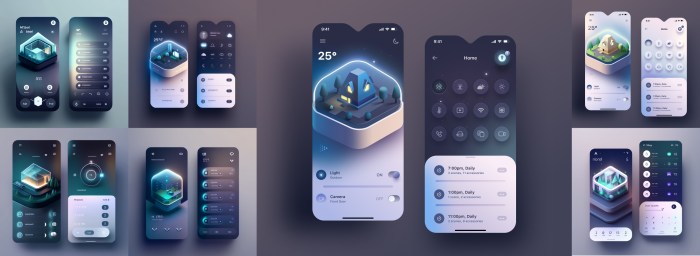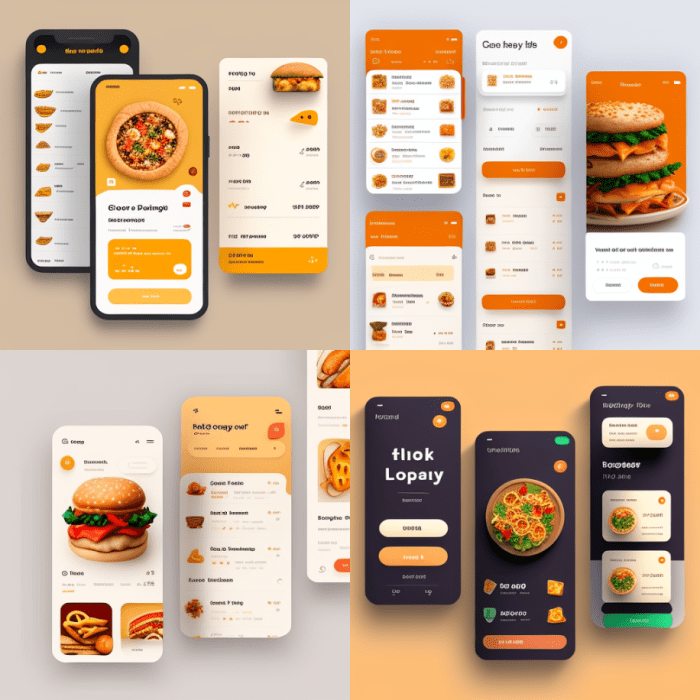Crafting Engaging UI Design: A Comprehensive Guide
In the digital realm, the landscape of user interface design is crucial for captivating user experiences. This guide delves into the essence of UI design, exploring its significance and key elements that shape the world of digital products.
From principles to processes, this guide unravels the intricate web of UI design, shedding light on best practices and innovative approaches that elevate user interfaces to new heights of functionality and aesthetics.
Introduction to UI Design
User Interface (UI) Design plays a crucial role in the success of digital products by enhancing user experience and satisfaction. It focuses on creating visually appealing and user-friendly interfaces that facilitate interaction between the user and the product.
Key Elements of User Interface Design
- Visual Design: Includes color schemes, typography, icons, and overall aesthetics to create a pleasing visual experience.
- Navigation: The layout and organization of elements to guide users seamlessly through the product.
- Interactivity: Incorporating elements like buttons, forms, and animations to engage users and provide feedback.
- Consistency: Maintaining uniformity in design elements throughout the product for a cohesive feel.
- Accessibility: Ensuring that the interface is usable by all users, including those with disabilities.
Examples of Well-Designed User Interfaces
One prime example of effective UI design is the user interface of the mobile app "Instagram." The app's simple layout, intuitive navigation, and visually appealing design make it easy for users to browse, share, and interact with content seamlessly. Another example is the website "Airbnb," which features a clean design, clear call-to-action buttons, and a user-friendly search functionality that enhances the overall user experience.
Principles of UI Design

Consistency, hierarchy, and feedback are fundamental principles in UI design that guide the creation of user-friendly interfaces. Consistency ensures that elements like buttons and icons are uniform throughout the interface, providing a sense of familiarity to users. Hierarchy helps to prioritize information based on importance, making it easier for users to navigate and understand the interface.
Feedback, such as visual cues or animations, informs users about the outcome of their actions, enhancing the overall user experience.
Flat Design vs. Skeuomorphism
Flat design and skeuomorphism are two contrasting styles in UI design. Flat design focuses on minimalism, using simple elements like clean lines and bright colors to create a sleek and modern interface. Skeuomorphism, on the other hand, incorporates realistic textures and shadows to mimic real-world objects, providing a more tactile and visually rich experience.
While flat design offers a clean and contemporary look, skeuomorphism can make interfaces more intuitive and engaging.
Typography and Color Schemes
Typography plays a crucial role in UI design, as it affects readability and visual hierarchy. Choosing the right fonts and sizes can enhance the overall aesthetics of the interface and improve user experience. Similarly, color schemes help create visual appeal and establish a mood for the interface.
By using harmonious color combinations and considering color psychology, designers can evoke specific emotions and guide user interactions effectively.
UI Design Process

When it comes to UI design, the process involves several key steps that are crucial for creating an effective and user-friendly interface. From wireframing to prototyping, each phase plays a significant role in shaping the final design
Wireframing
Wireframing is the initial stage of UI design where rough sketches or basic layouts are created to Artikel the structure and functionality of the interface. It helps in visualizing the placement of elements and content before moving on to the more detailed design stages.
Prototyping
Prototyping is the stage where interactive models of the interface are created to simulate how users will interact with the design. It allows for testing and refining the user experience before final implementation, helping to identify any usability issues early on.
User Research and Usability Testing
User research and usability testing are essential components of the UI design process. User research involves gathering insights and feedback from target users to understand their needs, preferences, and behaviors. Usability testing, on the other hand, involves testing the design with real users to identify any usability issues and gather feedback for improvements.
Popular UI Design Tools
There are several popular UI design tools available that offer a range of functionalities to streamline the design process. Some examples include:
- Adobe XD: A comprehensive tool for designing, prototyping, and sharing user experiences.
- Figma: A collaborative interface design tool that allows for real-time collaboration and prototyping.
- Sketch: A vector-based design tool specifically for creating interfaces and user experiences.
- InVision: A platform for prototyping, collaboration, and workflow management in UI design projects.
Responsive UI Design
Responsive UI design refers to the approach of creating interfaces that adapt and respond to different screen sizes and resolutions, providing users with a seamless experience across various devices. It is crucial in today's digital landscape where users access websites and applications from smartphones, tablets, laptops, and desktops.
By designing responsively, designers can ensure that the content is easily accessible and readable, regardless of the device being used.
Best Practices for Designing Responsive Interfaces
When designing responsive interfaces, it is essential to follow best practices to ensure consistency and usability across different devices. Some key practices include:
- Utilizing a mobile-first approach to prioritize content and functionality for smaller screens.
- Creating flexible grids that adjust based on the screen size, ensuring proper alignment and spacing.
- Implementing media queries to apply specific styles based on breakpoints, optimizing the layout for different screen sizes.
- Optimizing images and media for faster loading times on mobile devices without compromising quality.
- Testing the responsive design across various devices to identify and address any issues or inconsistencies.
Media Queries and Flexible Grids
Media queries play a significant role in responsive UI design by allowing designers to apply different styles based on the screen size, orientation, or resolution. By defining breakpoints, designers can adjust the layout, typography, and other elements to provide an optimal user experience.
Flexible grids, on the other hand, help create a fluid layout that adapts to different screen sizes, maintaining consistency and readability.Overall, responsive UI design is essential for creating versatile user experiences that cater to the diverse range of devices used today.
By following best practices and utilizing tools like media queries and flexible grids, designers can ensure that their interfaces are accessible and user-friendly across all devices.
Concluding Remarks

As we conclude this exploration of UI design, it becomes evident that the fusion of creativity and functionality is at the core of exceptional user interfaces. Embrace the principles, master the process, and craft UI designs that resonate with users on a profound level.
Key Questions Answered
What is the significance of user interface design?
User interface design is crucial as it directly impacts user experience, usability, and overall satisfaction with digital products.
How do flat design and skeuomorphism differ in UI design?
Flat design focuses on minimalism and simplicity, while skeuomorphism replicates real-world objects in design elements.
Why is responsive UI design important?
Responsive UI design ensures that digital interfaces adapt seamlessly to different devices and screen sizes, providing a consistent user experience.




